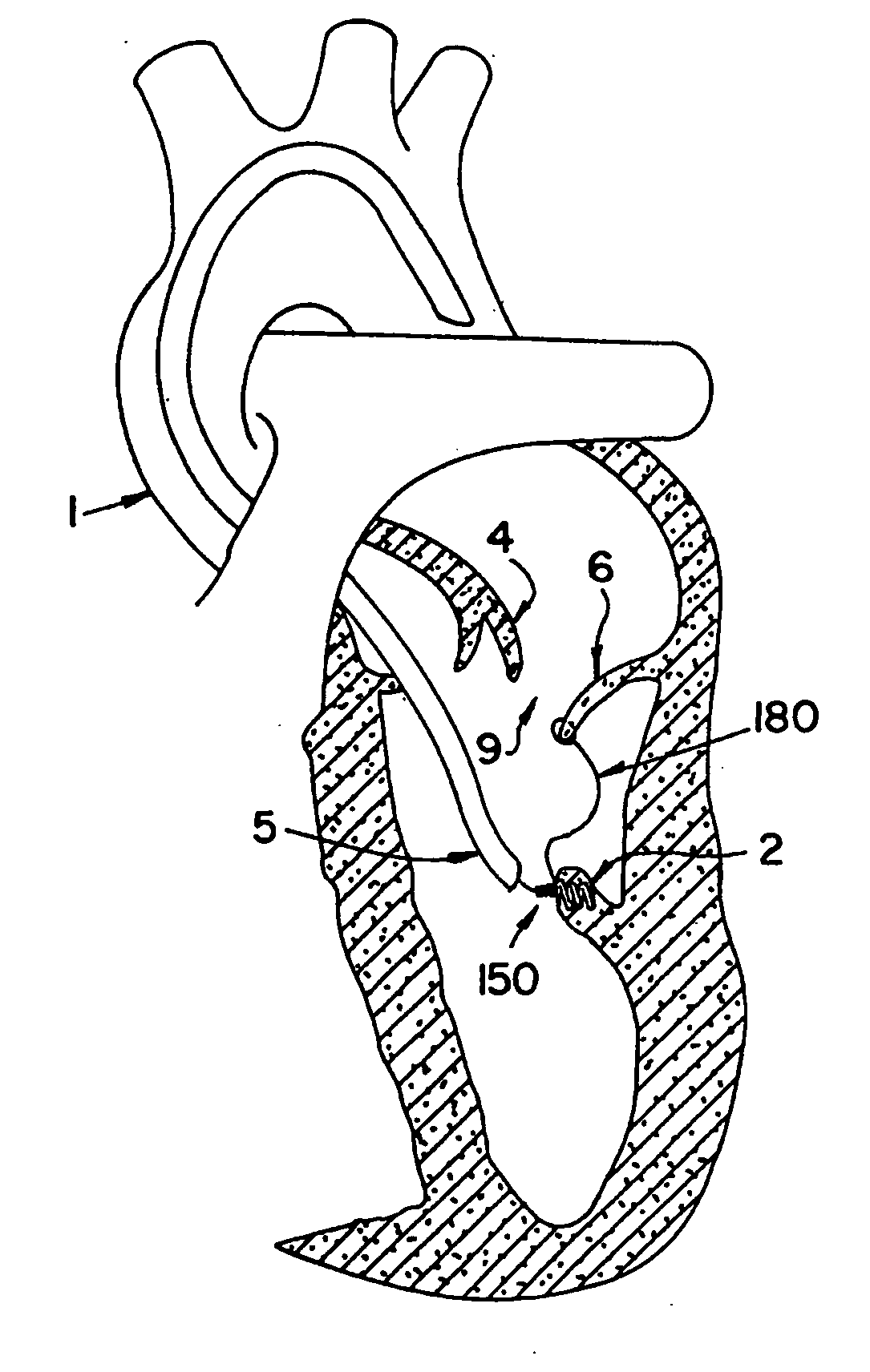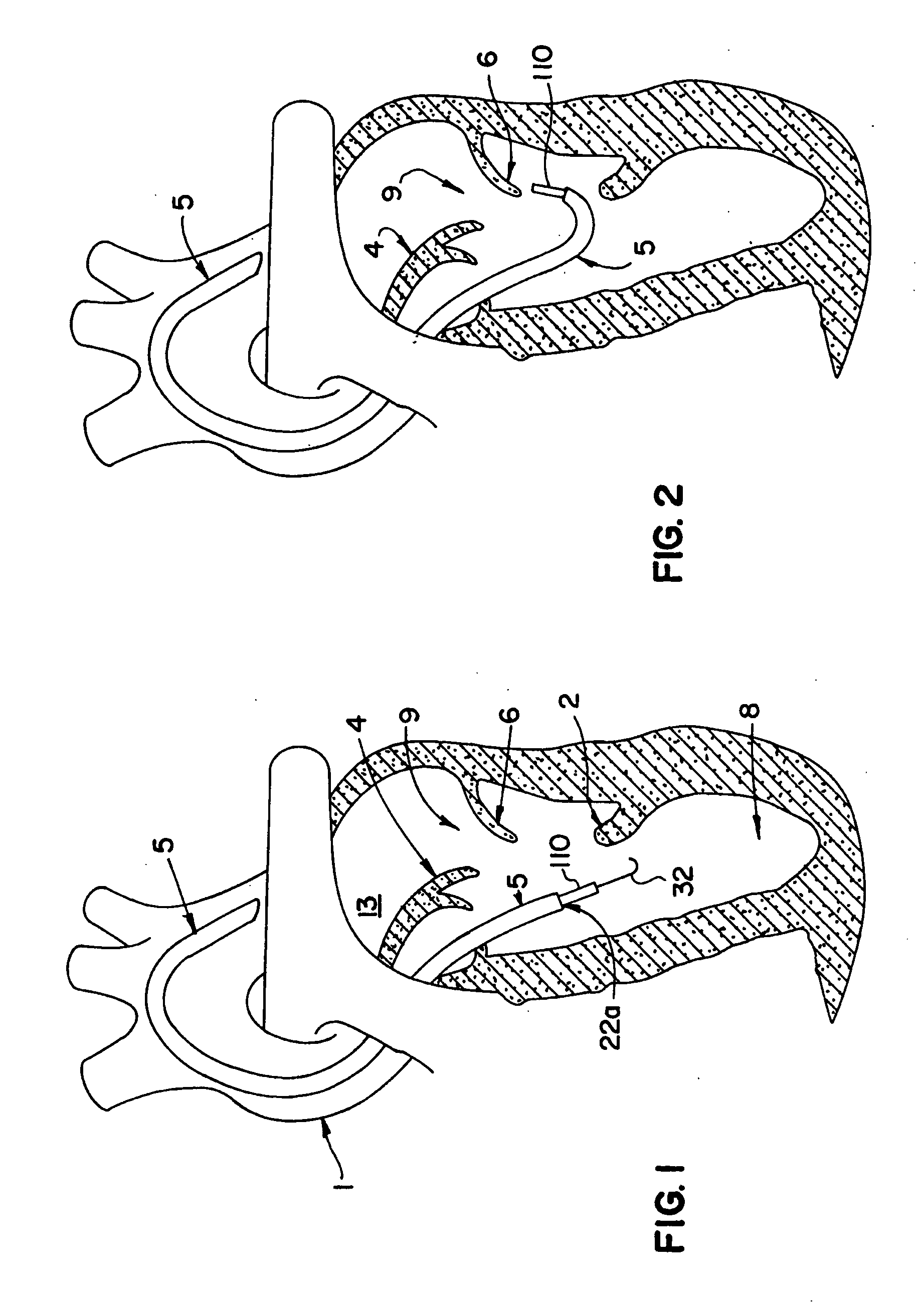Percutaneous cardiac valve repair with adjustable artificial chordae
a technology of artificial chordae and percutaneous cardiac valve, which is applied in the field of luminal system treatment of patients, can solve the problems of decreased patient's ventricle septal dimension, and increased patient's risk of stroke, so as to reduce the septal-lateral dimension of the patient's ventricle , the effect of reducing the regurgitation of the mitral valv
- Summary
- Abstract
- Description
- Claims
- Application Information
AI Technical Summary
Benefits of technology
Problems solved by technology
Method used
Image
Examples
Embodiment Construction
[0083] Reference will now be made in detail to the present preferred embodiments of the invention, examples of which are illustrated in the accompanying drawings. The methods and corresponding steps of the invention will be described in conjunction with the detailed description of the system.
[0084] The systems and methods provided in accordance with the teachings of the present invention allow adjustment of the geometry of various portions of a patient's heart. For example, systems and methods in accordance with the invention permit creation of an artificial mitral valve chord from a ventricular papillary muscle to the valve leaflet by a percutaneous approach and without the use of cardiopulmonary bypass or any need to stop the heart of the patient. The length of this artificial chord can be adjustable until the device used to implant the chord is uncoupled. By way of further example, neochordae of predetermined lengths can also be implanted percutaneously in accordance with the in...
PUM
 Login to View More
Login to View More Abstract
Description
Claims
Application Information
 Login to View More
Login to View More - R&D
- Intellectual Property
- Life Sciences
- Materials
- Tech Scout
- Unparalleled Data Quality
- Higher Quality Content
- 60% Fewer Hallucinations
Browse by: Latest US Patents, China's latest patents, Technical Efficacy Thesaurus, Application Domain, Technology Topic, Popular Technical Reports.
© 2025 PatSnap. All rights reserved.Legal|Privacy policy|Modern Slavery Act Transparency Statement|Sitemap|About US| Contact US: help@patsnap.com



